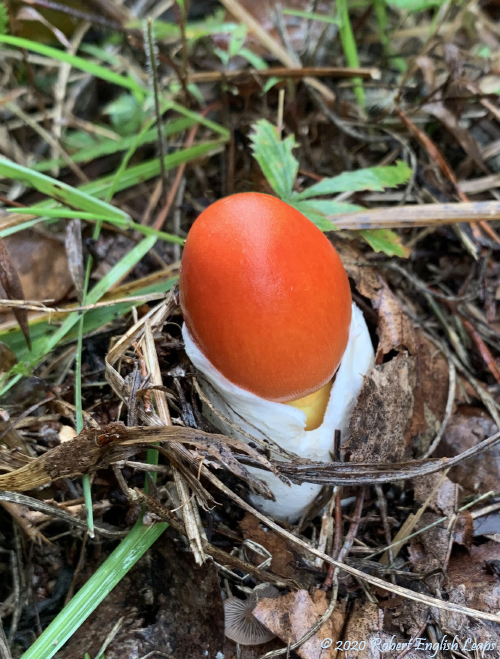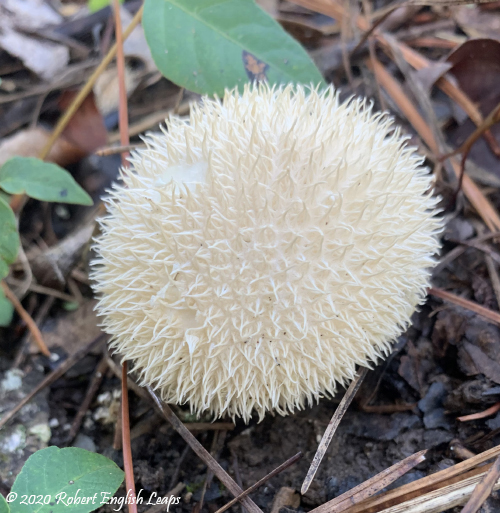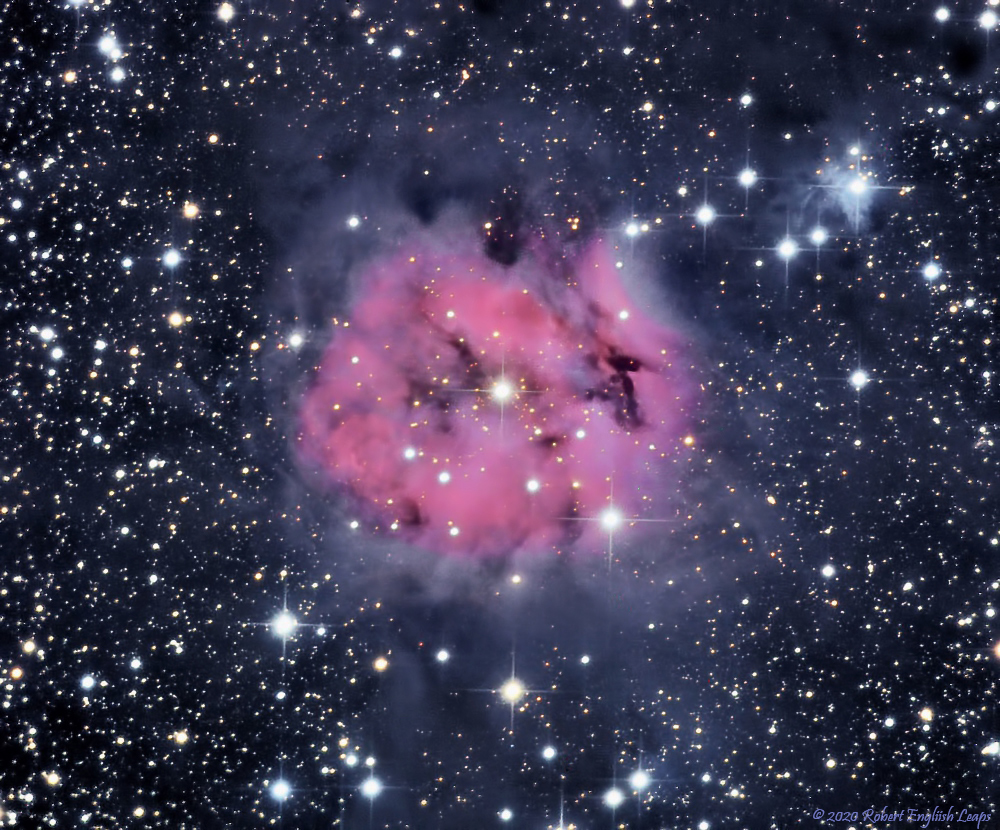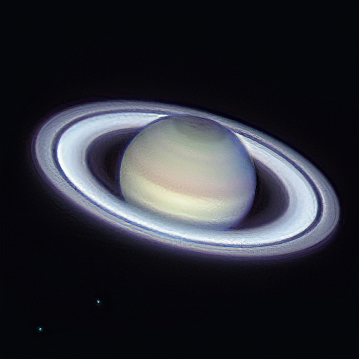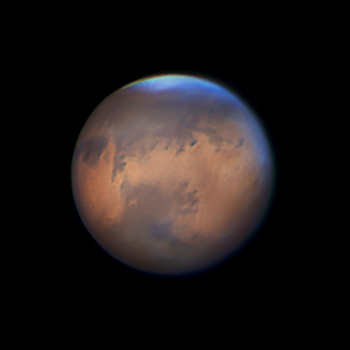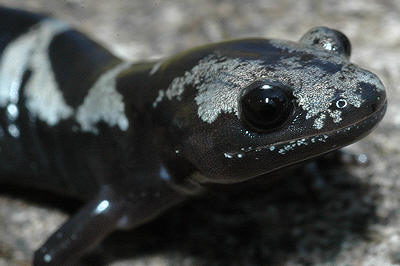The purpose of this feature is to give scout leaders, educators and naturalists an idea of some of the natural events coming up each month. We will try to cover a variety of natural events ranging from sky events to calling periods of amphibians, bird and mammal watching tips, prominent wildflowers and anything else that comes to mind. We will also note prominent constellations appearing over the eastern horizon at mid-evening each month for our area for those who would like to learn the constellations. If you have suggestions for other types of natural information you would like to see added to this calendar, let us know! Note: You can click on the hyperlinks to learn more about some of the featured items. To return to the Calendar, hit the "back" button on your browser, NOT the "back" button on the web page. All charts are available in a "printer friendly" mode, with black stars on a white background. Left clicking on each chart will take you to a printable black and white image. Though we link book references to nationwide sources, we encourage you to support your local book store whenever possible.
Notes From August 2020
My route takes me through a variety of habitats. The road winds through small patches of woods before opening out into pasture land used by horses and cattle. Just before that I pass the small wetland shown at right. Part of the fun in beginning before sunrise is that you get to hear the full dawn chorus of the birds. This little wetland is always filled with song as I pass by. Earlier in the summer I rarely passed it without hearing Common Yellowthroats. The Virginia Pines behind the wetland sometimes harbor Brown-headed Nuthatches making their "squeaky-toy" calls. I discovered a small population of Grasshopper Sparrows in the pastures beyond the wetland, and heard them call frequently earlier in the month. Loggerhead Shrikes leave prey items like Rainbow Scarab Beetles impaled on the barbed wire fence that borders the road. Barn Swallows, Tree Swallows, Northern Rough-wing Swallows, Cliff Swallows and Purple Martins fly low over the fields and perch on the fences. Many immature swallows are also present this time of year. The fields and woods are a more muted green in late summer and the pallet seems to shift towards the ends of the spectrum. Bright yellows and purples are everywhere. Goldenrod, Black-eyed Susan, Evening Primrose and various sunflowers provide the yellow. Ironweed, Mistflower, Downy Lobelias and Morning glories add the purples. Patches of Butterfly Weed provide bright orange roadside accents and Cardinal Flowers light up the stream crossings with saturated reds. Queen Anne's Lace, Elderberry, Daisies, Wild Quinine, White Sweet Clover, and Wild Potato Vine add patches of white.
Mushrooms develop very quickly. It only takes a day or two for an emerging Caesar's Mushroom like the one at left to grow to its full size! European species of this mushroom were said to be a favorite dish of the early Caesars, hence the name. Caesar's Mushrooms are particularly striking when they are just emerging from the ground. The cap is the deepest red at this point and it contrasts with the pale lemon yellow of the stipe and the pure white cup. Although Caesar's Mushrooms are edible, they are a member of the genus Amanita, which includes some famously deadly mushrooms like the Destroying Angel. Some of the very poisonous members of the genus are quite common and can look similar to this species. Therefore none of the field guides recommend harvesting it to eat. Amanitas like the Destroying Angel attack the liver. The result damage can necessitate a liver transplant or be fatal. Amanitas are responsible for over ninety percent of mushroom poisoning fatalities.
When I looked it up, I found the scientific name to be Lycoperdon echinatum. The species name, echinatum, sounded familiar, so I looked up the etymology. Echinatum comes from the Greek word echinos, meaning "sea-urchin" or "hedgehog." Sea Urchins are in the Class Echinoidea, which comes from the same Greek root. Neat! But what about the Genus for these puffballs, Lycoperdon? What is its etymology? Here's where it gets a little strange. The Genus was established in 1700 by Joseph Tornefort (1656-1708), a French botanist who is said to be the first to make a clear definition of the concept of genus for plants. The etymology of the Genus Lycoperdon comes from the Greek "lukos" (wolf) and "perdomai" (emit air from the bowels, to pass intestinal gas). Wait...what? Apparently some members of the genus have a distinctly bad odor, particularly as the spore-bearing structure ages. I picture the great botanist puzzling over the perfect name for his new Genus. Then, in a flash of insight, he says, "I've got it!" Lycoperdon echinatum is listed as odorless, and edible in three out of my four mushroom guides.
I believe that this summer I've had the most cloudy nights of any summer that I can remember. There are a lot of very bright emission nebulae in the summer sky and I decided to photograph The Cocoon Nebula, IC 5146. The Cocoon Nebula does not really look like a cocoon to me. To me its overall shape reminds me of the head of an Eastern Screech-Owl.
The Cocoon Nebula is located in Cygnus, and is about 4,000 light-years distant. The central star, Couteau 2320, is over seven times the Sun's diameter and its total energy output is almost 20,000 times that of the Sun! It is only about 100,000 years old. Its radiation causes the hydrogen cloud that surrounds it to glow red in the light of hydrogen alpha. Also seen in the image are two other types of nebulae. The bluish reflection nebula shines by reflected starlight and is blue for the same reason our sky is blue. Blue light scatters more than other regions of the spectrum. Also seen are dark nebulae seen in silhouette. The Cocoon Nebula is a stellar nursery that is about 15 light-years in diameter. Stars are being formed within the nebula and hundreds of young stellar objects have been found within its borders.
Sky Events for September 2020: The September Equinox occurs on September 22nd at 9:31am EDT, marking the first day of autumn in the Northern Hemisphere.
Morning Sky: Venus continues to dazzle in the dawn sky this month, rising about 3-1/2 hours before the Sun. As the month progresses its apparent size diminishes and as it gets more gibbous. It is the brightest star-like object in the eastern sky before dawn so you won't have any problem picking it out.
Evening Sky:
Mercury
reaches greatest elongation from the Sun on October 1st, but it will still
be very close to the western horizon, setting less than 50 minutes after
the sun.
Saturn is only about 8 degrees to the east of Jupiter as the month begins. Like Jupiter it will remain in Sagittarius this month. Saturn is due south about 10:45pm EDT as the month begins. If you've never seen Saturn, it's simply spectacular in just about any size telescope.
In fact, even a good quality 60mm refractor will give a better view of the ringed planet than Galileo was ever able to see. Saturn was a puzzle to him. In his low-resolution telescope the planet appeared as three separate discs - one large disc with a smaller disc on each side of it. A few years later, he returned to look at the planet when the rings presented edge-on. His two attendant discs had disappeared! He never solved the riddle. He would have loved to see the view available to just about any amateur astronomer today.
Details can be seen well in larger telescopes in good seeing conditions. If you are not used to viewing Mars it will appear quite small through the eyepiece. After all, its diameter is only a little over half that of Earth. Picking out the subtle details on Mars takes patience. Plan on spending some time viewing it and wait for moments when the atmosphere steadies. On the evening of September 5th the Moon will pass by Mars only about 1/2 of a degree away! Look to the east around 11:00pm EDT for our area.
The views below show the sky looking east at 10:45pm EDT on September 15th. The first view shows the sky with the constellations outlined and names depicted. Star and planet names are in green. Constellation names are in blue. The second view shows the same scene without labels. In Andromeda, see if you can pick out the soft glow of the Andromeda Galaxy. It's shown on the chart below. If you succeed in spotting it, you'll be seeing an object that's about 2.5 million light-years distant! Small telescopes may allow you to pick out the two brightest satellite galaxies of the Andromeda Galaxy . These are NGC 205 (visible below the core of the Andromeda Galaxy in the image at right) and NGC 221 (visible above and to the left of the core). Your best chance to see them will be when the galaxy is high overhead.
On Learning the Constellations: We advise learning a few constellations each month, and then following them through the seasons. Once you associate a particular constellation coming over the eastern horizon at a certain time of year, you may start thinking about it like an old friend, looking forward to its arrival each season. The stars in the evening scene above, for instance, will always be in the same place relative to the horizon at the same time and date each September. Of course, the planets do move slowly through the constellations, but with practice you will learn to identify them from their appearance. In particular, learn the brightest stars for they will guide you to the fainter stars. Once you can locate the more prominent constellations, you can "branch out" to other constellations around them. It may take you a little while to get a sense of scale, to translate what you see on the computer screen or what you see on the page of a book to what you see in the sky. Look for patterns, like the stars that make up the "Square of Pegasus." The earth's rotation causes the constellations to appear to move across the sky just as the sun and the moon appear to do. If you go outside earlier than the time shown on the charts, the constellations will be lower to the eastern horizon. If you observe later, they will have climbed higher. As each season progresses, the earth's motion around the sun causes the constellations to appear a little farther towards the west each night for any given time of night.Recommended: Sky & Telescope's Pocket Star Atlas is beautiful, compact star atlas. A good book to learn the constellations is Patterns in the Sky, by Hewitt-White. For sky watching tips, an inexpensive good guide is Secrets of Stargazing, by Becky Ramotowski.
A good general reference book on astronomy is the Peterson
Field Guide,
A Field Guide to the Stars and Planets, by Pasachoff. The book retails for around $14.00.
The Virtual Moon Atlas is a terrific way to learn the surface features of the Moon. And it's free software. You can download the Virtual Moon Atlas here. Apps: We really love the Sky Safari 6 Pro. It is available for both iOS and Android operating systems. There are three versions. The Pro is simply the best astronomy app we've ever seen. The description of the Pro version reads, "includes over 100 million stars, 3 million galaxies down to 18th magnitude, and 750,000 solar system objects; including every comet and asteroid ever discovered." A nother great app is the Photographer's Ephemeris. Great for finding sunrise, moonrise, sunset and moonset times and the precise place on the horizon that the event will occur. Invaluable not only for planning photographs, but also nice to plan an outing to watch the full moon rise. Available for both androids and iOS operating systems.
Amphibians:
Frog and toad choruses start waning in September but some frogs and toads
are still calling.
Spring Peepers
are also know as "Autumn Pipers" and can be heard calling from patches of
woods during the fall. Listen also for the very dry and scratchy
version of the Upland Chorus Frog's song on rainy fall evenings.
Green Frogs and Southern Leopard Frogs occasionally call. You can sometimes find the eggs of Marbled Salamanders in wooded wetlands in the fall. Recommended: The Frogs and Toads of North America, Lang Elliott, Houghton Mifflin Co. Archives (Remember to use the back button on your browser, NOT the back button on the web page!) Natural Calendar February 2020 Natural Calendar December 2019 Natural Calendar November 2019 Natural Calendar September 2019 Natural Calendar February 2019 Natural Calendar December 2018 Natural Calendar November 2018 Natural Calendar September 2018 Natural Calendar February 2018 Natural Calendar December 2017 Natural Calendar November 2017 Natural Calendar October 2017Natural Calendar September 2017 Natural Calendar February 2017 Natural Calendar December 2016 Natural Calendar November 2016 Natural Calendar September 2016Natural Calendar February 2016 Natural Calendar December 2015 Natural Calendar November 2015 Natural Calendar September 2015 Natural Calendar November 2014 Natural Calendar September 2014 Natural Calendar September 2013 Natural Calendar December 2012 Natural Calendar November 2012 Natural Calendar September 2012 Natural Calendar February 2012 Natural Calendar December 2011 Natural Calendar November 2011 Natural Calendar September 2011 Natural Calendar December 2010 Natural Calendar November 2010 Natural Calendar September 2010 Natural Calendar February 2010 Natural Calendar December 2009 Natural Calendar November 2009 Natural Calendar September 2009 Natural Calendar February 2009 Natural Calendar December 2008 Natural Calendar November 2008 Natural Calendar September 2008 Natural Calendar February 2008 Natural Calendar December 2007 Natural Calendar November 2007 Natural Calendar September 2007 Natural Calendar February 2007 Natural Calendar December 2006 Natural Calendar November 2006 Natural Calendar September 2006 Natural Calendar February 2006
Natural Calendar December 2005
Natural Calendar November 2005
Natural Calendar September 2005
Natural Calendar February 2005
Natural Calendar December 2004
Natural Calendar November 2004
Natural Calendar September 2004
Natural Calendar February 2004
Natural Calendar December 2003
Natural Calendar November 2003 Natural Calendar February 2003 Natural Calendar December 2002 Natural Calendar November 2002 Nature Notes Archives: Nature Notes was a page we published in 2001 and 2002 containing our observations about everything from the northern lights display of November 2001 to frog and salamander egg masses. Night scenes prepared with The Sky Professional from Software Bisque All images and recordings © 2020 Leaps
|
|

